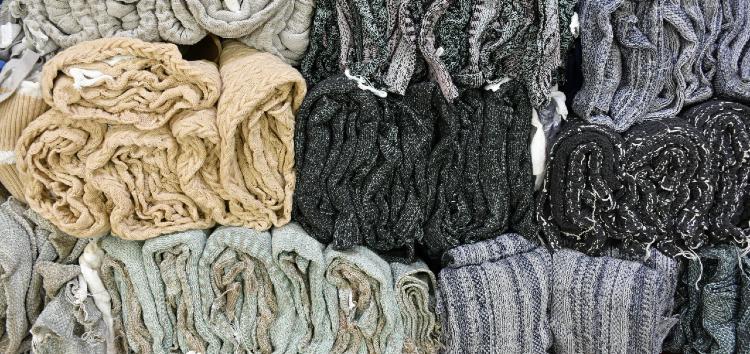- EBRD plans to provide targeted support to the cashmere industry in Mongolia
- Assistance to increase the number of spinning facilities and foster sustainable farming
- Bank co-produces an environmental impact assessment and policy recommendations
The importance of the cashmere industry to Mongolia, which accounts for nearly 40 per cent of the world’s raw cashmere output, cannot be underestimated. In a country with a population of around 3.4 million people, there are 190,000 herder households looking after almost 27 million goats. The processing sector employs around 10,000 people, and almost 90 per cent of factory workers are women.
The cashmere – a fibre obtained from a type of goat native to the Gobi Desert – is normally collected in March-April, when then goats are combed by hand. White, beige, warm grey and brown are the four natural colours of Mongolian cashmere, meaning the country offers the widest colour range available.
This raw cashmere is transported to processing plants, where it is sorted by colour and guard hair and contaminants are removed manually. The cashmere is then washed to remove any remaining dirt and dust, before being dried. Once dried, it is passed through dehairing machines and dyed. During the yarning (or spinning) phase, batches of dehaired cashmere are fed into spinning machines, which twist the fibres into yarns or threads. This is when the fine fabric, known all over the world, is born.
Finally, manufacturers knit or weave the yarn into a final product. This lengthy process, which can take up to half a year, is still manual at many stages. This is not because the industry is backward, but because many processes require a human touch so as not to compromise quality.
The EBRD has long worked with both processors and herders involved in the production of cashmere to make the entire value chain more sustainable. There are several major obstacles to the development of the local cashmere sector. Mongolia’s limited spinning capacity, for instance, means the country can only process around 4,500 tonnes of the 9,300 tonnes of raw cashmere produced annually. The construction of yarn-spinning facilities will require significant investment, to the tune of around US$ 100 million. Consequently, most of Mongolia’s raw cashmere is exported (mainly to China) without value-adding in-country processing.
To address such issues, the EBRD is working with the government of Mongolia and local financial institutions to provide targeted support for the entire production cycle, from combing to finishing. This support can range from tailor-made financial products, including working-capital financing, to consultancy projects aimed at improving farming practices and pasture management. The ultimate objective is to unlock the potential of the domestic cashmere sector, which could contribute up to US$ 1.5 billion annually to the Mongolian economy.
The EBRD’s involvement is important for the sector not just because of the Bank’s vast experience in implementing green economy financing projects, but also because of its ability to address the most complicated environmental problems. Increased demand for cashmere from the international fashion industry means that Mongolia is rapidly increasing its number of goats, leading to overgrazing and the degradation and desertification of pastureland – a real risk for Mongolia, which is already badly affected by climate change.
To assess the environmental impact of this process, the EBRD, the country’s leading cashmere manufacturer, Gobi, and the Sustainable Fibre Alliance have jointly implemented the three-year Supporting Sustainable Cashmere Production project. The project has prepared detailed policy recommendations, as well as practical guidelines for herders on improving pasture management and identifying suitable models for traceability.
This is still a work in progress and will require significant expertise and financial input, but the goal is noble: preserving the industry and making it more sustainable is more than an economic necessity, it is crucial to maintaining the Mongolian way of life.




